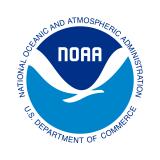Monitoring, Predicting, and Communicating Flash Drought in your Region: October 17, 2023
This webinar provided local and regional perspectives on approaches for monitoring, predicting, and communicating flash drought, including an overview of the 2023 flash drought in the Midwest. Specifically, it reviewed how flash drought is identified (and noted regional variations), tools for monitoring and predicting flash drought, and guidance for communicating the risk of flash drought. Further, this webinar recapped key takeaways from the 2nd National Flash Drought Workshop, which took place in May 2023.




